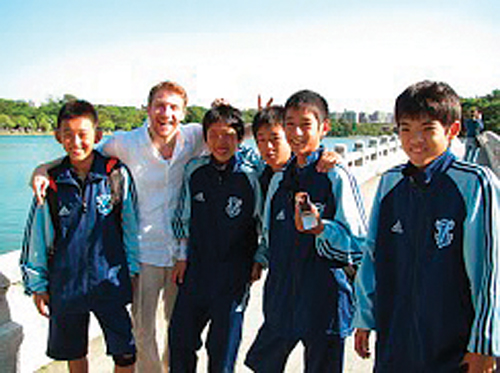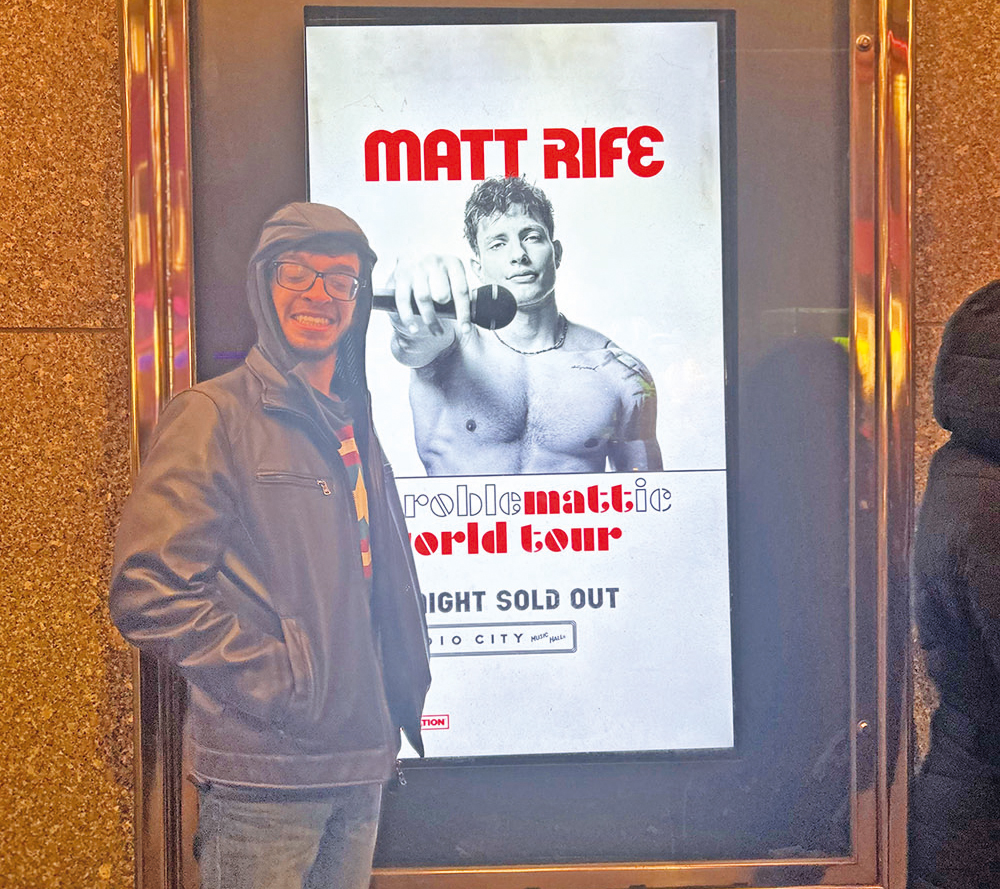.jpg)
.jpg)
Paradise Valley—Zalmen Mlotek sends an email. “Ich fur oif Yapan.” (“I’m going to Japan!”)
The day after he got back, there was another email. “Call me at my mom’s.” There was something to tell.
Zalmen and his brother Mark, and their children, all have a passion for Yiddish and Yiddish culture, especially music and the dramatic arts. Zalmen, a Julliard grad and long-time Teaneck resident, is the artistic director of The National Yiddish Theatre-Folksbiene, which is in the midst of planning a city-wide bash to celebrate 100 years of continuous performances as the oldest operating theatre troupe in all of North America, and is presenting the acclaimed Lies My Father Told Me as its fall main stage production.
Zalmen’s mother is Chana Mlotek, the extraordinary woman and Yiddish folklorist who, as described by this writer in a Folksbeine bio of her, is literally and figuratively the matriarch of a family and group of colleagues and protégés who have worked long and hard to bring a vibrant, exciting, Yiddish culture to Jewish life in America.
Chana and Yosl, z’l, her husband and a Holocaust survivor, devoted their lives to recovering the culture, the music and lyrics of Yiddish through the centuries—melodies and words that could have been forgotten forever, and they did it almost one note and line at a time. Now they are considered heroes for being in the vanguard to rescue Yiddish culture.
Zalmen’s trip to Japan is a direct consequence of the Mlotek family’s devotion to the cause, and his son Elisha accompanied him. It all began about 18 months ago, when a Japanese correspondent on assignment in New York, Yoichi Haruyama of Asahi press, contacted him to find out about two Jewish songs that the Japanese love and have been popular in Japan for the last 50 years.
(The songs he wanted to know about are Dona, Dona, a song also known as “Dos Kelbl” (The Calf), about a calf being led to slaughter that was written by Shalom Secunda for a play called Esterke. The other song is the Israeli circle dance, Mayim! Mayim! And the lyrics come from Isaiah.)
Zalmen said, “I invited him to come meet my mother, and we all had dinner at my brother’s house. We sang for him and told him what the origins of the songs were and what they really meant.
“During the course of the meal with my mom, the writer asked me if I would be interested in going to Japan to teach Jewish music. Then a Japanese professor, Hariyuki Kuroda, who teaches German in Tokyo interviewed my mom about another Yiddish song. And then a few months ago, when Prof. Kuroda translated Ruth Gilbert’s book on Yiddish music from the Holocaust into Japanese, he thought it might be a good idea if I came along and helped launch the book.”
The trip meant a lot to Zalmen and his younger son Elisha, because for him teaching Jewish music is in his blood and neshumeh. “What I love to do,” Zalmen told JLBC, “is stress what Jewish life and creativity were like before the war. Of course, I want to do that by teaching and concertizing, so the Japanese organized six appearances for me in as many universities. I was in Tokyo, Hiroshima, and Osaka, and Kobe, giving lectures in all those places.
“I must say it was very poignant for me. Here I was in Japan, only because of the actions of one righteous Japanese man, Chiune Sugihara, who issued travel papers to people like my father, who was trapped in Riga and allowed them to get as far as Kobe. That saved my father’s life. First he came to Kobe, and then he was sent to Shanghai. It wasn’t great, but it wasn’t what was going on in Europe, either.
“Who had an idea that the Japanese were interested in the Jews and that that interest went back to Jacob Schiff and others like him? The Japanese had respect and a soft spot for us because of their own David and Goliath story in the Russo-Japanese War. So when Hitler asked that Shanghai be turned into a concentration camp, they refused to do it. They interned the Jews, but they didn’t persecute them.”
He added that while the youth of Japan may not understand these connections, exactly, they do know what it feels like to be the underdog, especially when it comes to Russia.
What was most significant for Zalmen was that the songs he was teaching and singing were not just about the Holocaust. “I sang songs of Jewish life, of the Jewish revolutionary ideas, the songs of protest. I did one concert, where I performed only Holocaust songs from Gilbert’s book, but I prefaced it with a lecture that tied the past to the future. I really appreciated that these were the people who saved my father’s life…and Elisha recorded everything for posterity…at least for our family! And one of the most moving things was our visit to Kobe, my father’s first safe haven.”
As part of the lectures, Elisha prepared a power point with the family story, so by the time they got to the music part, the students understood the context for it.
The whole trip was organized by Professor Kuroda, and when people in Kobe found out that Zalmen was coming, they let the people from the shul in Kobe know. “I couldn’t believe that they prepared a gedeckeh tisch, mit alleh gitta zachen, a full spread with delicious cakes and beverages. Suddenly I found myself with the Yidden in Kobe, and other than Japanese locals, they were, for the most part, transplanted Israelis in their 20s who somehow found their way to Kobe and decided to stay and save the shul. The building we were in was built in the 1970s, and the shul was probably the continuation of the shul in Kobe that was established in the 1940s by Holocaust refugees.”
Zalmen, who is not much given to sentiment, found this a very touching experience. “They are relatively young Israelis, and Motti, who seemed to be their leader, had been an elite officer in the IDF. He was injured in Japan and couldn’t use his legs, but his hosts took care of him, taught him Karate, which rehabilitated him, and in return, he teaches them the Israel martial arts of Krav Maga and takes care of the shul. I think that’s a great story!”
There is only one woman, Dani, who is involved in the Kobe synagogue. Dani came to Japan when she was 20. She has four children and she takes care of the shul. “She was the person who prepared our collation, and made me feel at home. In the middle of our meal, Elisha and I spontaneously started singing a niggun, and the next thing we knew we were dancing in simcha, and crying from being in galus together—but also crying from joy because we survive and go forward, and here we were in the city where my father was safe.
The Mloteks were driven to Osaka for their last concert and managed to convince the crowd to sing along and dance with their hosts in the auditorium. “Everyone was up and dancing, celebrating our Jewish heritage and the richness of our music. It really fills my heart with good will to know that these people on the other side of the world are truly interested in our past, our heritage and our culture. It wasn’t a conscious thing, it was the sudden realization that everyone I spoke to knew who Sugihara was, and knew that my father was saved. …
“I don’t know that I felt that I was giving back, but the idea was that I was really connected to my father and to the Japanese by this trip. I met people who were active in Jewish studies in Japan, who knew our culture and loved it, and I got to see a picture we don’t normally get because we visited all these universities and met so many different kinds of people.”
By Jeanette Friedman













